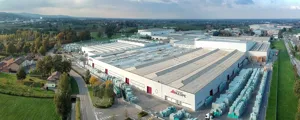Upon receiving the material, we recommend always to check the correspondence between the delivery documents and the goods received.
Before laying, it’s important to carefully check the correct tone, calibre and choice of material. It is also necessary to check that the material is free of obvious defects (as defined in the general conditions of sale), as claims on material already laid the defects of which were visible before installation.
Given that variation in tonalities is a characteristic of ceramic products, a check should be made of the V-shade value of the tiles to be installed. In any case, to obtain the best aesthetic result possible and an optimal mix, we suggest laying the tiles taking pieces out of a number of different boxes. For veined products, as well as for natural stones, it is recommended to arrange the slab veins in a way so as to obtain the best aesthetic and colour effect.
The final customer needs to ensure, as far as this is within their responsibility, microclimatic and lighting conditions that enable the installer to perform the laying operations in a reliable way, checking, therefore, the materials and the work in progress.









